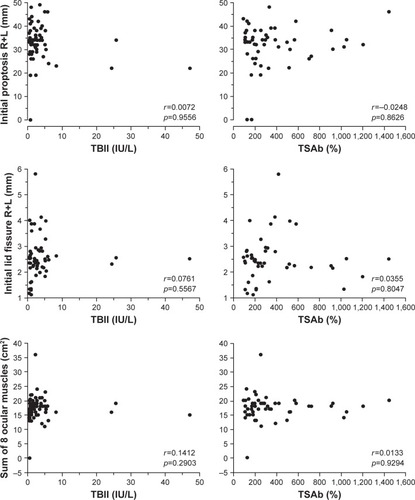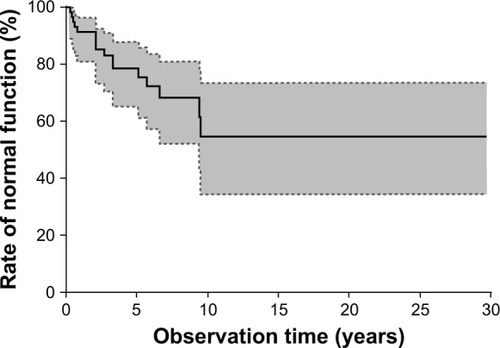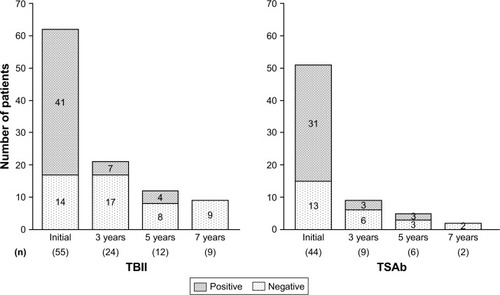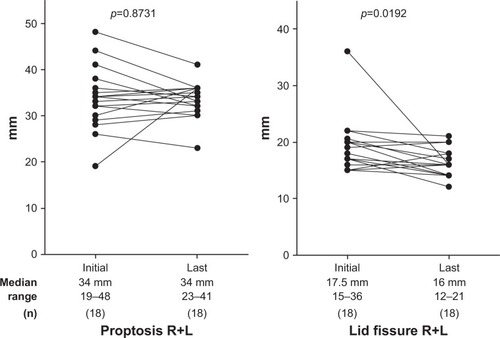Figures & data
Table 1 Characteristics of the 58 patients initially diagnosed with EGD
Figure 1 Correlation between TRAb (TBII and TSAb) and eye symptoms.
Abbreviations: TRAb, thyrotropin receptor antibodies; TBII, thyrotropin-binding inhibitory immunoglobulin; TSAb, thyroid-stimulating immunoglobulin; L, left; R, right.

Figure 2 Kaplan–Meier curve describing the time remaining for normal thyroid function in 58 EGD patients.
Abbreviation: EGD, euthyroid Graves’ disease.

Figure 3 Transition of the TBII and TSAb positive rates in EGD patients.
Abbreviations: TBII, thyrotropin-binding inhibitory immunoglobulin; TSAb, thyroid-stimulating immunoglobulin; EGD, euthyroid Graves’ disease; TRAb, thyrotropin receptor antibodies.

Table 2 Itemized ophthalmic initial treatments in 58 EGD patients
Figure 4 Clinical course of ophthalmic symptoms in 18 EGD patients without any eye treatments.
Abbreviations: EGD, euthyroid Graves’ disease; L, left; R, right.

